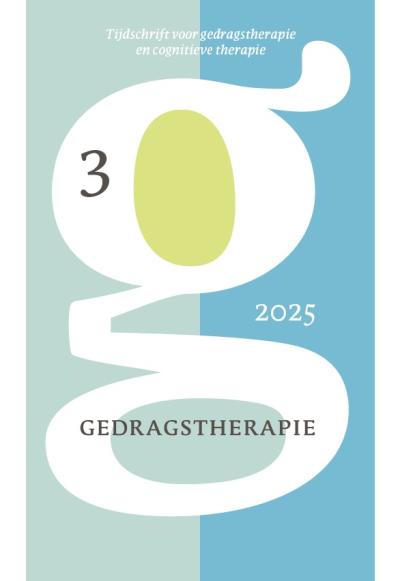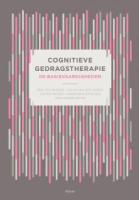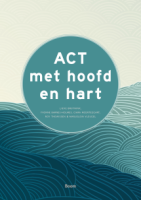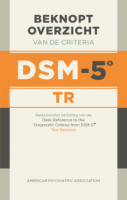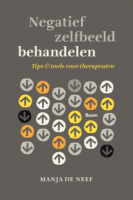Inhoud
De behandeling van depressie bij kinderen en jongeren: bruggen slaan tussen cognitieve gedragstherapie en gehechtheidstheorie
Samenvatting
Hand in hand met de toenemende erkenning van het bestaan van depressie bij kinderen en jongeren werden er verschillende cognitief gedragstherapeutische (CGT) behandelprogramma's ontwikkeld. Hoewel onderzoek aantoont dat deze behandelprogramma's effectief zijn, blijkt uit een aantal toonaangevende meta-analyses dat de grootte van de behandeleffecten eerder beperkt is. Het betrekken van ouders in de behandeling, lijkt voorlopig weinig meerwaarde te bieden. Mogelijk komt dit omdat de gehechtheidskwaliteit van de relatie onvoldoende in rekening wordt gebracht bij de huidige behandeling. Recent werd aangetoond dat de gehechtheidsprocessen beschreven kunnen worden vanuit de cognitieve schematheorie. Deze literatuurstudie beoogt dit argument te onderbouwen en te illustreren hoe deze recente inzichten de behandeling van depressie bij kinderen en adolescenten kunnen optimaliseren.
Literatuur
- Ainsworth, M.D.S., Blehar, M.C., Waters, E., & Wall, S. (1978). Patterns of attachment: A psychological study of the strange situation. Hillsdale, NJ: Erlbaum Associates.
- APA (1980). DSM 111 Diagnostic and Statistical Manual, 3rd Edition. American Psychiatric Association: Washington, D.C.
- Barrett, P.M., Dadds, M.R., & Rapee, R.M. (2004) Family treatment of childhood anxiety: A controlled trial. Journal of Consulting and Clinical Psychology, 72, 276–287.
- Bartholomew, K., & Horowitz, L.M. (1991). Attachment styles among young adults: A test of a four-category model. Journal of Personality and Social Psychology, 61, 226-244.
- Bosmans, G., Braet, C., Beyers, W., Van Leeuwen, K., & Van Vlierberghe, L. (2011). Parents' Power Assertive Discipline and Internalizing Problems in Adolescents: The Role of Attachment. Parenting: Science and Practice, 11, 34–55.
- Bosmans, G, Braet, C. Decoene N., & De Raedt, R. (2010). Attachment schemas and proximity seeking in middle childhood: Relationships between observed behavior and implicit process measures. Manuscript submitted for publication.
- Bosmans, G., Braet, C., Koster, E., & De Raedt, R. (2009). Attachment security is linked with attentional breadth in middle childhood. Journal of Clinical Child and Adolescent Psychology.
- Bosmans, G., Braet, C., & Vandevivere, E. (2011). Attachment and attachment-related interpretation biases. Unpublished manuscript.
- Bosmans, G., Braet, C., & Van Vlierberghe, L. (2010). Attachment and psychopathology in adult: are early maladaptive schemas the cognitive link? Clinical Psychology and Psychotherapy, 17, 374-385.
- Bosmans, G., De Raedt, R., & Braet, C. (2007). The invisible bonds: Does the secure base script of attachment influence children's attention towards their mother? Journal of Clinical Child and Adolescent Psychology. 36, 557-567.
- Bosmans, G., Bowles, D., Dewitte, M., & Braet, C. (2011). Priming attachment meaning influences the content and processing of attachment schema's. Manuscript in preparation.
- Bouton, M.E. (2004) Context and behavioural processes in extinction. Learning and Memory, 11, 485-494.
- Bowbly, J. (1969). Attachment. London: Penguin Books.
- Bowles, D., Meyer, B., & Bosmans, G. (2011). Primed attachment and biased social information processing. Manuscript in Preparation.
- Braet C., De Cuyper, S., & De Backer, V. (1997). Pak Aan: een werkboek om je sombere buien te overwinnen. Universiteit Gent: ongepubliceerd manuscript.
- Brumariu, L.E., & Kerns, K.A. (2010). Parent-child attachment and internalizing symptoms in childhood and adolescence: A review of empirical findings and future directions. Development and psychopathology, 22(1), 177-203.
- Carnelley, K.B., & Rowe, A.C. (2007). Repeated Priming of Attachment Security Influences Later Views of Self and Relationships. Personal Relationships, 14, 307-320.
- Clark, D.A., Beck, A.T., & Alford, B.A. (1999). Scientific Foundations of Cognitive Theory and Therapy of Depression. New York, John Wiley & Sons Inc.
- Cohen, J. (1988). Statistical power analysis for the behavioral sciences (2nd ed.). Hillsdale, NJ: Lawrence Earlbaum Associates.
- Cuijpers, P., Straten, A. van, Smits, N., & Smit, F., (2006). Screening and early psychological intervention for depression in schools. Eur Child Adolesc Psychiatry, 15, 300-307.
- Diamond, G.S., Reiss, B., Diamond, G.M., Siqueland, L., & Isaacs, L. (2002). Attachmentbased family therapy for depressed adolescents: A treatment development study. Journal of the American Academy of Child and Adolescent Psychiatry, 41, 1190–1196.
- Diamond, G.S., Wintersteen, M.B., Brown, G.K., Diamond, G.M., Gallop, R., Shelef, K., et al. (2010). Attachment-based family therapy for adolescents with suicidal ideation: A randomized controlled trial. Journal of the American Academy of Child and Adolescent Psychiatry, 49(2), 122-131.
- Dineen, K.A., & Hadwin, A. (2004). Anxious and depressive symptoms and children's judgements of their own and others' interpretation of ambiguous social scenarios. Anxiety Disorders, 18, 499-513.
- Dowell, K.A., & Ogles, B.M. (2010). The effects of parent participation on child psycho therapy outcome: A meta-analytic review. Journal of Clinical Child and Adolescent Psychology, 39, 151-162.
- Dwyer, K.M. (2005). The meaning and measurement of attachment in middle and late childhood. Human Development, 48, 155-182.
- Eimecke, S., Pauschardt, J., Mattejat, F. (2010). Prevention of childhood anxiety and depression: Efficacy of an additional parent training program. Verhaltenstherapie, 20, 192-200.
- Feeny, N.C., Silva, S.G., Reinecke, M., McNulty, S., Findling, R.L., Curry, J., Wells, K., Rohde, P., Simons,A., Kennard, B., Kratochvil, C., Ginsberg, G., Robins, M., May, D., Pathak, S., Rosenberg, D., & March, J.S. (2009). An exploratory analysis of the impact of family functioning on treatment for depression in teens. Journal of Clinical Child and Adolescent Psychology, 38, 814-825.
- Fraley, R.C. (2002). Attachment stability from infancy to adulthood: Metaanalysis and dynamicmodeling of developmental mechanisms. Personality and Social Psychology Review, 6, 123-151.
- Hermans, D., Eelen, P, & Orlemans, J.W.G. (2007). Inleiding tot de Gedragstherapie. [Introduction to Behaviour Therapy]. Houten: Bohn Stafleu Van Loghum.
- Hill, J. (2002). Biological, psychological and social processes in the conduct disorders. Journal of Child Psychology and Psychiatry, 43, 133-164.
- Kerns, K.A., Tomich, P.L., & Kim, P. (2006). Normative trends in children's perceptions of availability and utilization of attachment figures in middle childhood. Social Development, 15, 1-22.
- Klein, J.B., Jacobs, R.H., & Reinecke, M.A. (2007). Cognitive-behavioral therapy for adolescent depression: a meta-analytic investigation of changes in effect-size estimates. Journal of the American Academy of Child and Adolesc Psychiatry, 46, 1403-1413.
- Lakdawalla, Z., Hanking, B.L., & Mermelstein, R. (2007). Cognitive theories of depression in children and adolescents: a conceptual and quantitative review. Clinical Child and Family Psychology Review, 10, 1-24.
- Lynch, M., & Cicchetti, D. (1998). Trauma, mental representation, and the organization of memory for mother-referent material. Development and Psychopathology, 10, 739-759.
- Mezulis, A. H., Hyde, J.S., & Abramson, L.Y. (2006). The developmental origins of cognitive vulnerability to depression: Temperament, parenting, and negative life events in childhood as contributors to negative cognitive style. Developmental Psychology, 42(6), 1012-1025.
- Mikulincer, M., & Shaver, P.R. (2007). Attachment in adulthood: Structure, dynamics, and change. New York: Guilford Press.
- Raes, F., Verstraeten, K., Bijttebier, P., Vasey, M. W., & Dalgleish, T. (2010). Inhibitory control mediates the relationship between depressed mood and overgeneral memory recall in children. Journal of Clinical Child and Adolescent Psychology, 39, 276-281.
- Reid, M. J., Webster-Stratton, C., & Hammond, M. (2003). Follow-up of children who received the incredible years intervention for oppositional-defiant disorder: maintenance and prediction of 2-year outcome. Behavior Therapy,34, 471–491.
- Restifo, K., & Bögels, S.M. (2009). Family processes in the development of youth depression: Translating the evidence to treatment. Clinical Psychology Review, 29, 294-316.
- Ridenour, T.A., Greenberg, M.T., & Cook, E.T. (2006). Structure and validity of people in my life: A self-report measure of attachment in late childhood. Journal of Youth and Adolescence, 35, 1037-1053.
- Roelofs, J., Rood, L., Meesters, C., Dorsthorst, V. te, Bogels, S., Alloy, L.B., & Nolen-Hoeksema, S. (2009). The influence of rumination and distraction on depressed and anxious mood: A prospective examination of the response styles theory in children and adolescents. European Child and Adolescent Psychiatry, 18, 635-642.
- Rutter, M. (1995). Clinical implications of attachment concepts: retrospect and prospect, Journal of Child Psychology and Psychiatry, 126, 520-533.
- Stark, K.D. (2010). An evaluation of the efficacy of the action treatment program for depressed 9 to 13 -year-old girls: implications for development of an attachment based parent training component. In G. Bosmans (Chair) Child and Adolescent Problems conducted at the meeting of the European Association of Behaviour and Cognitive Therapy, Milan (Italy).
- Stark, K.D., & Kendall, P.C. (1996a). Taking Action: A Workbook for Overcoming Depression. Available from Philip. C. Kendall, Department of Psychology, Temple Universi ty, Philadelphia, PA 19122.
- Stark, K.D., Simpson, J., Yancy, M., & Molnar, J. (2006). Parents' workbook for ACTION. Ard more, PA: Workbook.
- Thompson, R.A. (2008). Attachment-related mental representations: Introduction to the special issue. Attachment and Human Development, 10, 347-358.
- Timbremont, B., Bosmans, G., & Braet, C. (2008). Cognitieve gedragstherapie bij depressie. In C. Braet & S. Bogels (Red.) Protocollaire behandeling voor kinderen met psychische klachten, 305-325. Amersfoort: Boom.
- Timbremont, B., & Braet, C., Bosmans, G. & Van Vlierberghe, L. (2008). Information processing in referred youth: are cognitive biases specific to depression? Clinical Psychology and Psychotherapy, 15, 329-339
- Waters, E. (2002). The "Goodness" of Attachment Assessment: There Is A "Gold Standard" But It Isn't As Simple As That. Retrieved (Februari 14, 2011) from http:// www.psychology.sunysb.edu/attachment/measures/content/attachment_validity.html.
- Waters, E., Merrick, S., Treboux, D., Crowell, J., & Albersheim, L. (2000). Attachment stability in infancy and early adulthood: A 20-year longitudinal study. Child Development,71, 684-689.
- Waters, E., Crowell, J., Elliot, M., Corcorane, D., & Treboux, D. (2002). Bowlby's secure base theory and the social/personality psychology of attachment styles: Work(s) in progress. Attachment and Human Development, 4, 230-242.
- Waters, H.S., & Waters, E. (2006). The attachment working models concept: Among other things, we build script-like representations of secure base experiences. Attachment and Human Development, 8, 185-197.
- Weisz, J.R., McCarty, C.A., & Valeri, S.M., (2006). Effects of psychotherapy for depression in children and adolescents: a meta-analysis. Psychological Bulletin, 132, 132-149.
- Young, J.E., Klosko, J.S., & Weishaar, M. (2003). Schema Therapy: A practitioner's guide. New York: Guilford Publications.
 © 2009-2025 Uitgeverij Boom Amsterdam
© 2009-2025 Uitgeverij Boom Amsterdam
De artikelen uit de (online)tijdschriften van Uitgeverij Boom zijn auteursrechtelijk beschermd. U kunt er natuurlijk uit citeren (voorzien van een bronvermelding) maar voor reproductie in welke vorm dan ook moet toestemming aan de uitgever worden gevraagd:
Behoudens de in of krachtens de Auteurswet van 1912 gestelde uitzonderingen mag niets uit deze uitgave worden verveelvoudigd, opgeslagen in een geautomatiseerd gegevensbestand, of openbaar gemaakt, in enige vorm of op enige wijze, hetzij elektronisch, mechanisch door fotokopieën, opnamen of enig andere manier, zonder voorafgaande schriftelijke toestemming van de uitgever.
Voor zover het maken van kopieën uit deze uitgave is toegestaan op grond van artikelen 16h t/m 16m Auteurswet 1912 jo. Besluit van 27 november 2002, Stb 575, dient men de daarvoor wettelijk verschuldigde vergoeding te voldoen aan de Stichting Reprorecht te Hoofddorp (postbus 3060, 2130 KB, www.reprorecht.nl) of contact op te nemen met de uitgever voor het treffen van een rechtstreekse regeling in de zin van art. 16l, vijfde lid, Auteurswet 1912.
Voor het overnemen van gedeelte(n) uit deze uitgave in bloemlezingen, readers en andere compilatiewerken (artikel 16, Auteurswet 1912) kan men zich wenden tot de Stichting PRO (Stichting Publicatie- en Reproductierechten, postbus 3060, 2130 KB Hoofddorp, www.cedar.nl/pro).
No part of this book may be reproduced in any way whatsoever without the written permission of the publisher.
Inloggen VGCt en VVGT
Leden van de VGCt en de VVGT loggen in via de site van hun vereniging. Als u op die site bent ingelogd als lid, vindt u daar een button naar het Tijdschrift voor Gedragstherapie.
English
Behavioral Therapy: Journal for Behavioral Therapy and Cognitive Therapy ISSN 0167-7454
Information in English can be found here.



